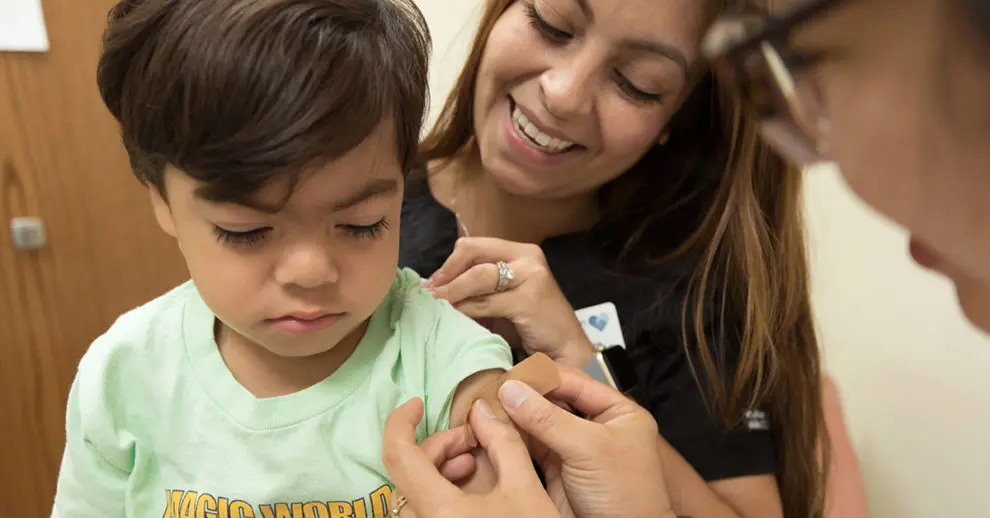When I worked in Iowa as a child health advocate I picked up the phone one day to find a pediatrician I’d never met on the line. He had seen my name in a newspaper article about the state legislature’s passage of twelve-month continuous coverage for kids in Medicaid and CHIP in a bold health care bill. I had helped get it passed.
“Thank you,” the doctor said. “This is a very important policy for kids. It means when we treat a child with cancer, we can design a year of treatment and know the chemo will be covered, hospital stays will be covered, and tests and referrals will be reimbursed. The parents’ stress level is lowered and that helps the patient, too.”
To me, this call said it all: When kids are sick, their coverage should be stable and usable. It should meet their health needs and allow them to see the providers they need to see.
Today, kids in roughly half the states receive continuous Medicaid and CHIP enrollment for 12 months from the day they join. Most use that coverage for well-child visits, vaccinations, developmental screenings, the occasional injury or accident, or things like earaches. For some children though, Medicaid and CHIP cover speech therapy, habilitation services for a disability, chemotherapy for cancer, or other special needs. For all of these kids and their parents, CHIP and Medicaid’s affordable and child-appropriate health coverage, with pediatric providers and benefits, provide peace of mind, a sense of safety, and financial relief.
In fact, 12-month continuous coverage has worked so well that advocates have begun to consider what might happen if we covered kids for the entirety of their early childhood years, from birth through age five when they start school. What if they had coverage every day while their brains are developing, while they’re acquiring language and honing motor skills? What if children with special health care needs could enjoy long-term treatment plans? What if their families could be spared the planning and paperwork currently required to juggle multiple medical providers, treatments, and even case managers?
We can be pretty sure about one outcome: Costs would likely go down. In a 2013 paper, policy experts Leighton Ku and Erika Steinmetz wrote that the average monthly Medicaid benefit cost for kids coverage averaged $151. When care was extended to six months of continuous coverage, the cost dropped to $140 per month. At 12 months of coverage, the cost plummeted nearly 30 percent to $110 per month.
Why do the benefits cost less with 12 months of continuous coverage? When coverage is maintained continuously, care isn’t skipped or delayed, therapy is regularly scheduled, and medicine is taken as prescribed and refilled on time. Children and parents can develop trusting relationships with providers, and establish a medical home, boosting the regularity of screening, growth and development assessments, and needed referrals. New illnesses and concerns are treated earlier, and the interventions are often less intrusive and costly. Chronic illnesses like asthma can be treated with effective primary care while reducing emergency room visits. Regular oral health services covered under Medicaid and CHIP help reduce the chronic condition of tooth decay.
So just imagine what improvements we could achieve in children’s health with continuous coverage to age six. Children with special health care needs might have fewer hospital stays or emergency room visits. Kids could receive early intervention even sooner for social/emotional and developmental issues. Families that move across state lines would be assured a smooth transition and continuous coverage regardless of their location. By the time kids enroll in kindergarten, they could be in better health with more of their needs met.
Sadly, recent developments suggest that we are going backward instead. A new study by the Georgetown University Center for Children and Families found that since 2017, enrollment in Medicaid and CHIP has declined by nearly one million kids. When the Census data is released in September we may find that this number is actually much higher. This unprecedented drop in coverage runs counter to the trend of dramatically increased coverage for children over the last several decades. In fact, in 2016, this country achieved an all-time low rate of uninsured children of 4.7 percent. The years of battles to protect the Affordable Care Act (ACA) and Medicaid, and the protracted fight to renew CHIP funding in 2017/18, hinted at this outcome. But it is still deeply troubling to see so many kids fall off public coverage.
During Children’s Week, we ask those who make policy decisions for children to make the smart choice: Make sure all kids have the health coverage they need during those early, vulnerable years. Let’s give kids continuous coverage from birth through to age six. Let’s keep them covered. It’s not just good for them. It’s good for the country.
